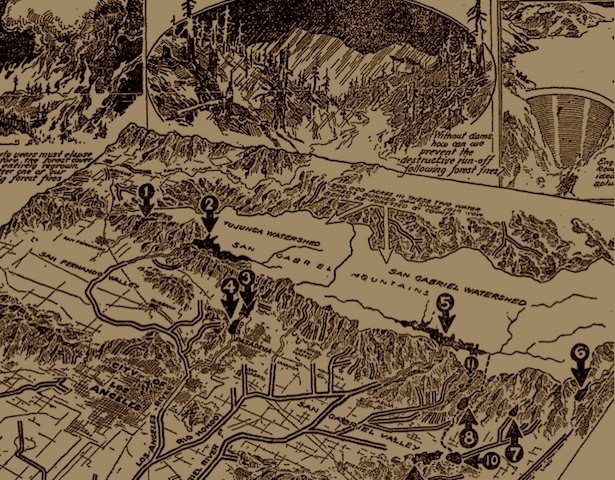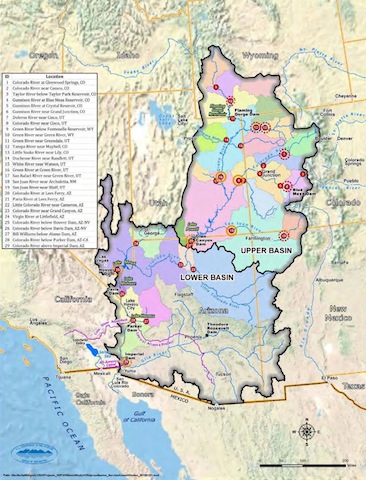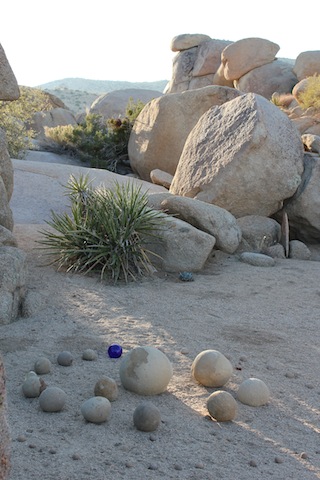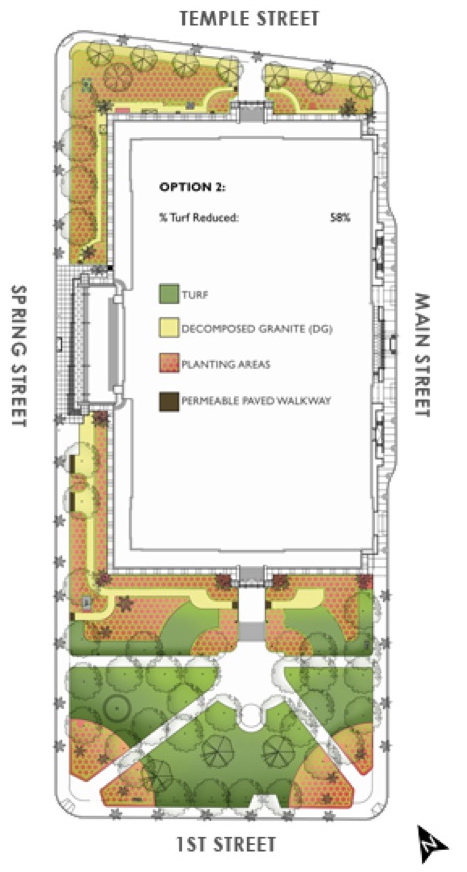Weather that drives you to the nozzle
Posted on | February 16, 2012 | No Comments
With rainfall across Los Angeles less than half the putative average for this time of year, and forecasts making discouraging noises about the prospects for a “March miracle,” it’s time for dry gardeners to water.
As odd as it sounds to be prescribing irrigation after light rains blew through and before summer heat, for lack of meaningful precipitation, late winter is the time to charge unnaturally dry ground. The soil is still porous, so there should be no run-off. Shorter and cooler days check evaporation and native and Mediterranean gardens are growing now, so they need a drink before they slip into summer dormancy in May.
But use caution. This is by no means a recommendation for a return to lawn-style frequent and light watering. It’s not about pushing a lot of new growth. It’s a recommendation to apply water occasionally, slowly and deeply. Irrigating now won’t make up the five to ten inches of rain missing across most of Southern California. This is merely about charging the soil so that when heat comes, you’re not battling wilt. To read more about best planting and watering practices in dry years, click here to crib from an old piece written in advance of a previous “La Nina” forecast.
How much water you put on your garden and when is of course dictated by zone, planting scheme and soil. For guides about coming up with the most resilient garden with the thriftiest irrigation, there is no better source than Bob Perry’s Landscape Plants for California Gardens.
Art, water and money
Posted on | February 12, 2012 | 2 Comments
 This detail from a 1922 drawing in the Los Angeles Times shows how nesting massive reservoirs in the peaks of the San Gabriel Mountains might check floods and impound water for Southern California. Nothing near the project depicted was realized. The graphic artist wasn’t a seismologist, never mind hydrologist. He drew what was described to him.
This detail from a 1922 drawing in the Los Angeles Times shows how nesting massive reservoirs in the peaks of the San Gabriel Mountains might check floods and impound water for Southern California. Nothing near the project depicted was realized. The graphic artist wasn’t a seismologist, never mind hydrologist. He drew what was described to him.
Nearly a century has passed but graphics depicting new water projects for Southern California remain almost as antique in their wishfulness. Last week, the Orange County Register produced a beautiful drawing showing how pumps might be placed in the Cadiz Valley in such a way that water supposedly “lost” to evaporation might be captured by sinking wells hundreds of feet below the floor of the Mojave Desert. Click here to keep reading
And the winner is . . .
Posted on | February 6, 2012 | No Comments
UPDATED 2/8/2012: Of three schematic plans for a new landscape around Los Angeles City Hall presented to the city council on Tuesday February 7th, the unanimous choice was Number 2, which initially proposed reducing turf by 58% and during tweaking into the “preferred option” reduced it to 51%.
The truth’s in there somewhere, possibly still in the changing room because there are always changes in this kind of process. The city hall agenda included a request for Recreation and Parks landscape architects to report back in ten days with details of what would be involved in applying the principles of the city’s 2011 storm water ordinance to the plans. This had been a point of concern in public meetings.
Perhaps the most eye-popping line in a recent Downtown News report is that outside the calculated costs of the three new gardens, Rec & Parks estimates of Occupy damage to the old City Hall grounds have been revised downwards from $400,000 to $76,000. The higher sum was released to the press by the city last October when the mayor and city council were becoming desperate to evict the Occupy protestors.
Small mercy that Rec & Parks staff do not work for the controller.
In the sliding scale of politicized best guestimates, the department is now claiming that maintenance costs will be higher for a low-water native garden than a lawn. There’s no evidence for this and a controlled study by the City of Santa Monica argues otherwise. One can only hope that this LA high number is revised openly and honestly as Rec & Parks familiarizes itself with dry gardening. Occupy and then the protest over how to relandscape City Hall into a state that it could become a public emblem of Southland beauty, pride in our native flora and water conservation may have all been a bit much for a department unused to these kinds of ructions. The Los Angeles City Council and Department of Recreation and Parks have done an admirable thing in conceding half of City Hall’s home turf. To them and the activists who bugged them into it, hats off.
Tags: chance of rain > City Hall landscapes > Emily Green > LA Department of Recreation and Parks
High good, low bad: Mead in January 2012
Posted on | February 3, 2012 | 1 Comment

Colorado River system. Source: Colorado River Basin Water Supply and Demand Study Technical Report B – Water Supply Assessment, US Bureau of Reclamation. Click on the map to read the technical report, which was published this week and contains climate and precipitation models.
As promised, some Friday notes on Lake Mead, Colorado River snowpack and two public comment meetings on the groundwater mining project proposed for Cadiz Valley in the eastern California Mojave.
First, according to the federal Bureau of Reclamation, Lake Mead closed January 2012 at 1,134.18 feet. The good news is that the continued decanting of last year’s record snowpack down the Colorado River storage system has pushed Mead, its largest reservoir, to 58% full, the highest elevation since 2006.
The bad news is that this year’s snowpack in the region feeding the Colorado is below normal and the overall trend is dry.
And so to the Mojave desert, where on Wednesday night (February 1st) the Santa Margarita Water District held its second public comment meeting about a draft environmental impact report for what it styles as the “Cadiz Valley Water Conservation, Recovery and Storage Project.” Click here to keep reading
A day in the Mojave
Posted on | February 2, 2012 | No Comments
 Beauty before water news, which was pre-empted yesterday by a trip to the Mojave Desert on the day that this site normally reserves for bemoaning the half-empty state of Lake Mead.
Beauty before water news, which was pre-empted yesterday by a trip to the Mojave Desert on the day that this site normally reserves for bemoaning the half-empty state of Lake Mead.
These photographs come from a series taken yesterday in two gardens whose common denominator is landscape designer and glass artist Leigh Adams, whose decades in the desert near Joshua Tree have helped form something of a mafia of writers, artists and simply desert-lovers whose gardens are connected by a series of shared art projects, post-fire restoration efforts and plain friendship.
Click here to see the full set on Flickr. Tomorrow, the spirit of industry providing, there will be some slightly delayed hand-wringing about lousy snowpack in the Rockies, some numbers from Lake Mead and notes from the Joshua Tree hearing on the Cadiz groundwater-mining proposal for land near the Mojave National Preserve. 




